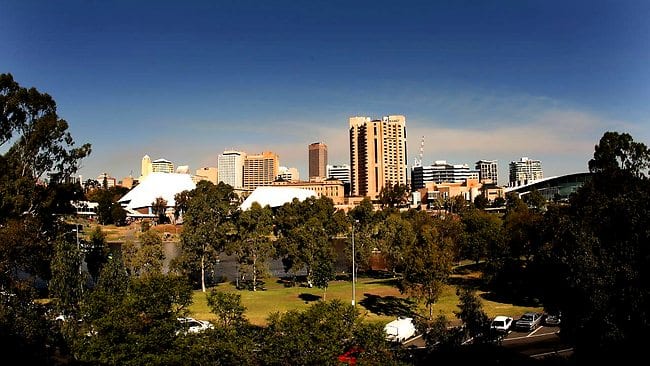South Australia’s Indian summer of low wholesale electricity prices have come to an abrupt end, with prices hitting the market peak for extended periods on Thursday evening as the unprecedented heatwave caused air-conditioning units to be switched on en masse.
The third day of the heatwave saw temperatures soar to a December record high of more than 45°C in Adelaide and 46°Ç in the suburbs and up to 48.5° in Port Augusta. In the state’s west, at Nullarbor, the temperature reached an Australian December record of 49°C.
For most of the last three months South Australia – thanks to mild temperatures and a record high share of wind and solar (more than 60 per cent) – enjoyed the lowest wholesale prices in the country, and had averaged $66/MWh since June 30 – bettered only by Queensland.
See: Renewable South Australia posts lowest wholesale prices for second month in row
But on Thursday the average price jumped to $822/MWh over the 24 hour period as the grid operator turned to most – but not all – of its available resources, including diesel generators which pushed, as they normally do – the wholesale price to the market cap of $14,700 for nearly an hour – at a cost of nearly $50 million.
 (The state owned back up generators were not switched on, RenewEconomy understands, and some plant were not operating at capacity. The state owned generators will be leased to Infigen Energy and Nexif from May to allow them to provide “firming” capacity to clients and build more wind and solar farms)..
(The state owned back up generators were not switched on, RenewEconomy understands, and some plant were not operating at capacity. The state owned generators will be leased to Infigen Energy and Nexif from May to allow them to provide “firming” capacity to clients and build more wind and solar farms)..
It says something about the resilience of the South Australian grid now that there were no outages from supply shortfalls. Operational demand reached a near record high 3,118MW around 7pm as temperatures hit 45.3°C in the city and more than 46°C in the suburbs.
Even at 4am and 5am on Friday, with the temperatures still at an astonishing 36°C in the city, demand hovered around 2,000MW – significantly higher than the evening peak demand of a weak earlier.
Prices had fallen however, to around $30/MWh, because of the strong contribution of wind energy and because the diesel generators were no longer needed. The state’s huge resource in rooftop solar helped keep a lid on prices during the day as most peaking plant could be left idle, taking the strain off the grid.
The growing resilience was highlighted in a report released on Thursday by the Australian Energy Market Operator into an “islanding” event that separated South Australia from the rest of the main grid for more than 5 hours on November 16.
See: South Australia’s renewables grid separates from NEM; lights don’t go out
That event was caused by a communications problem that caused two transmission links to fail- but the South Australia grid, operating at just over 50 per cent renewables at the time (as it usually does) performed well, with most of the gas generators, wind farms, solar farms, virtual power plants and grid-scale batteries operating at the time doing what they were supposed to do.
South Australia emerged unscathed during another major separation even in August last year, when lightweight strikes hit transmission lines linking NSW and Queensland, sparking a series of events that saw both Queensland and South Australia separated from the grid, and load-shedding in NSW, Victoria and Tasmania.
See: On first day as PM, Morrison learns difference between Big Battery and Big Banana
Queensland, despite its large dependence on coal fired generators, operated in an unstable state for some period because the big thermal generators did not respond to the frequency changes as they should have. South Australia, with the Tesla big battery and the Dalrymple North battery responding in speed, had no issues.










